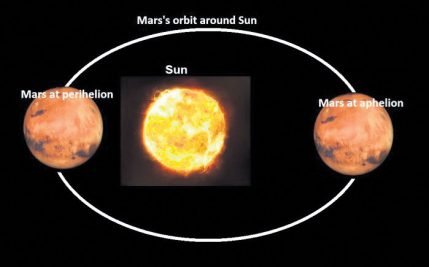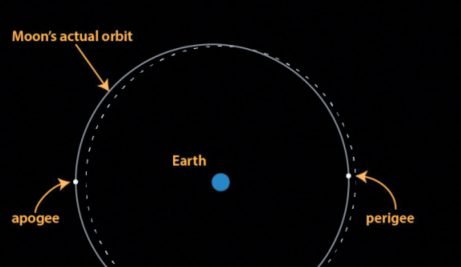Perihelion and Aphelion
Earth’s closest and farthest points from Sun
Published Date - 4 January 2021, 07:48 PM
The terms perihelion and aphelion describe different points in the Earth’s orbit of the Sun.Remember that the Earth orbits the Sun in an elliptical path—which is oval, not circular. This means that the Earth is about 3 million miles nearer to the Sun in January at its nearest point than in July at its farthest point.
Aphelion is the point of the Earth’s orbit that is farthest away from the Sun.
Perihelion is the point of the Earth’s orbit that is nearest to the Sun.
Aphelion always happens in early July. About two weeks after the June solstice, Earth is farthest from the Sun. Perihelion always happens in early January. About two weeks after the December Solstice, Earth is closest to the Sun.
Seasons happen because Earth’s axis is tilted at an angle. It’s because Earth orbits the Sun on a tilt that our planet gets more or less of the Sun’s direct rays at different times of the year.
The point in the Moon’s orbit that is closest to the Earth is called the “perigee” and the point farthest from the Earth is known as the “apogee.” Perigee and Apogee are often confused.
Aphelion and Perihelion on Mars

Though aphelion and perihelion are terms mostly used in reference to Earth since it’s our home planet, they are also relevant to other planets orbiting the Sun. Every planet has points in the orbits when they are farthest or closest away from their star.
For example, planet Mars has an even more elliptical orbit than Earth. In comparison, Earth’s orbit seems almost circular; this almost-circular orbit may be why Earth’s climate is relatively stable.
Mars also has four seasons but they are twice as long because it takes about two Earth years for Mars to go around the Sun. The southern hemisphere of Mars has a warmer, shorter spring and summer than in the north, as Mars is closest to the Sun towards the end of southern spring. The southern winter is longer because Mars is farthest away from the Sun then, moving more slowly in its elliptical orbit around the Sun.
Earth’s Perihelion and Aphelion
The Earth is closest to the Sun, or at the perihelion, about two weeks after the December solstice, when it is winter in the Northern Hemisphere. Conversely, the Earth is farthest away from the Sun, at the aphelion point, two weeks after the June solstice, when the Northern Hemisphere is enjoying warm summer months.
Perigee and Apogee

The Moon’s path around the Earth is also elliptical. The point in the Moon’s orbit that is closest to the Earth is called the perigee and the point farthest from the Earth is known as the apogee. The terms are also sometimes used interchangeably with the Earth’s perihelion and aphelion.
Now you can get handpicked stories from Telangana Today on Telegram everyday. Click the link to subscribe.
Click to follow Telangana Today Facebook page and Twitter .